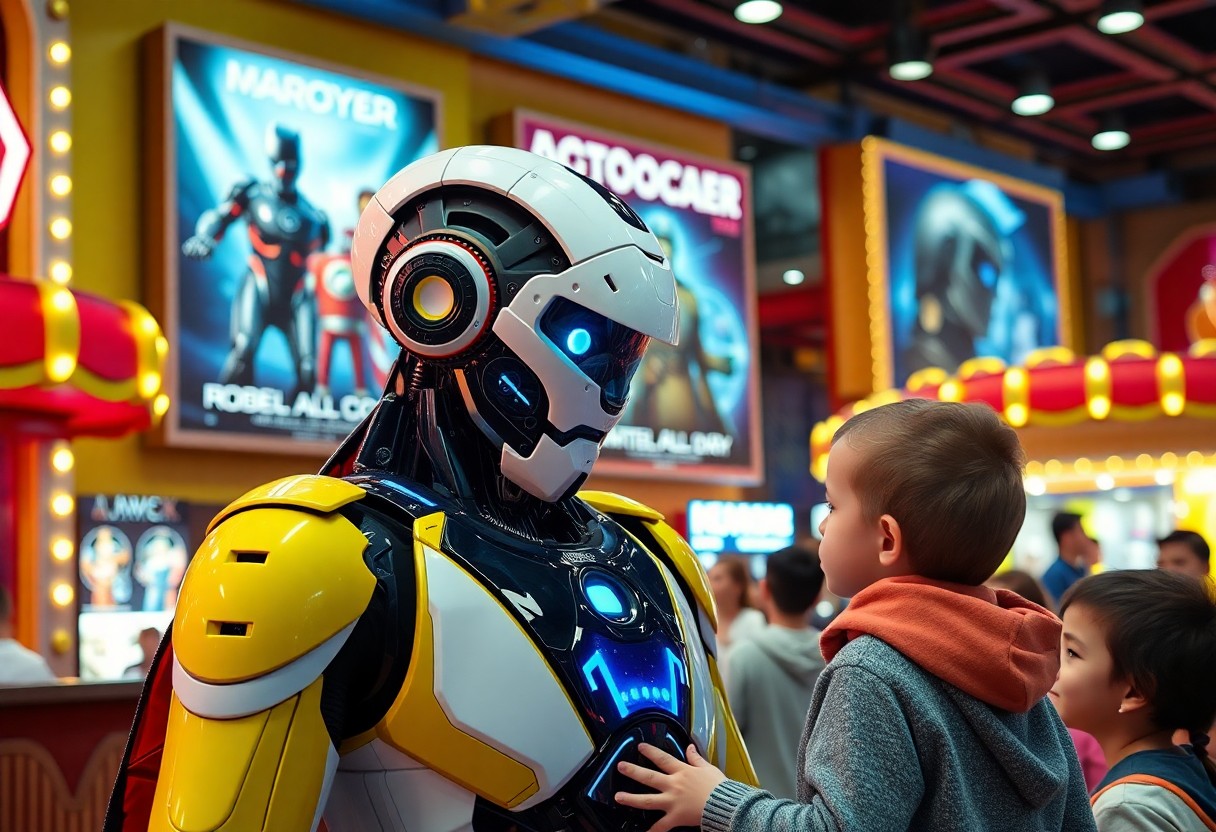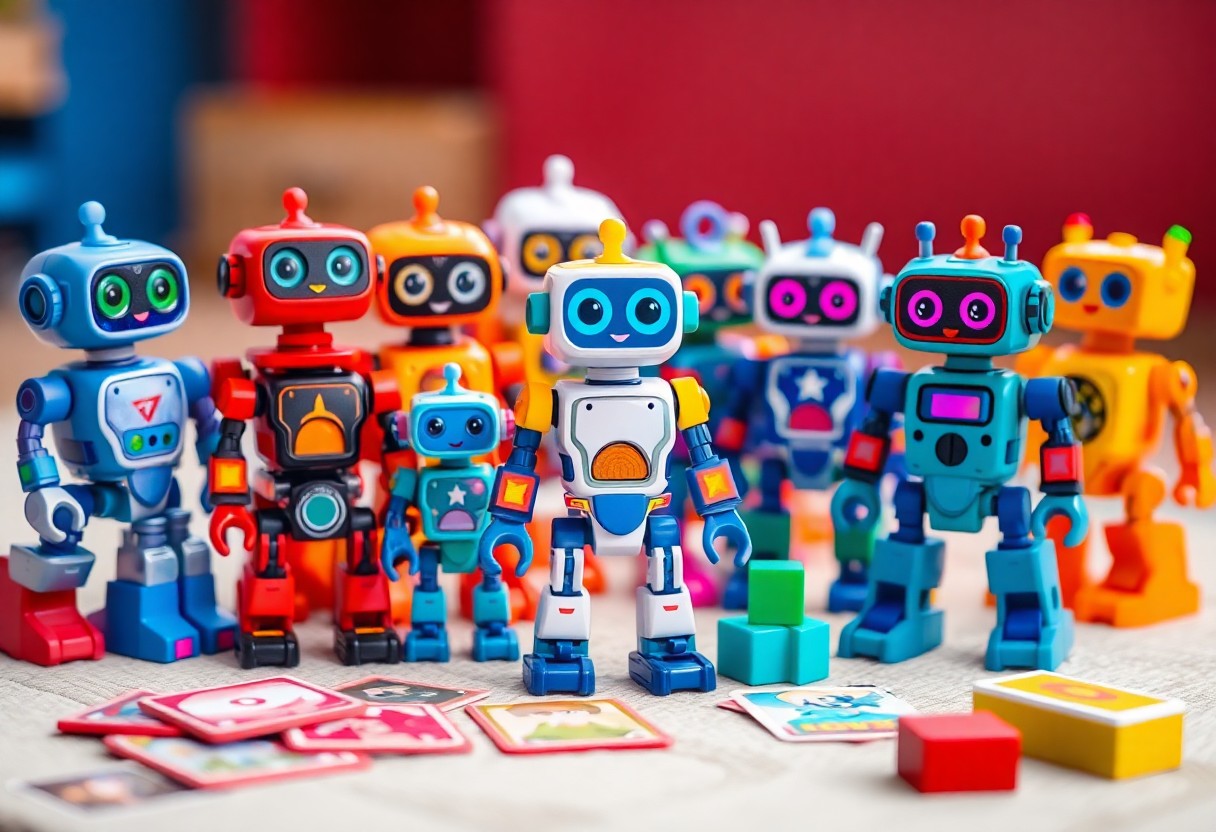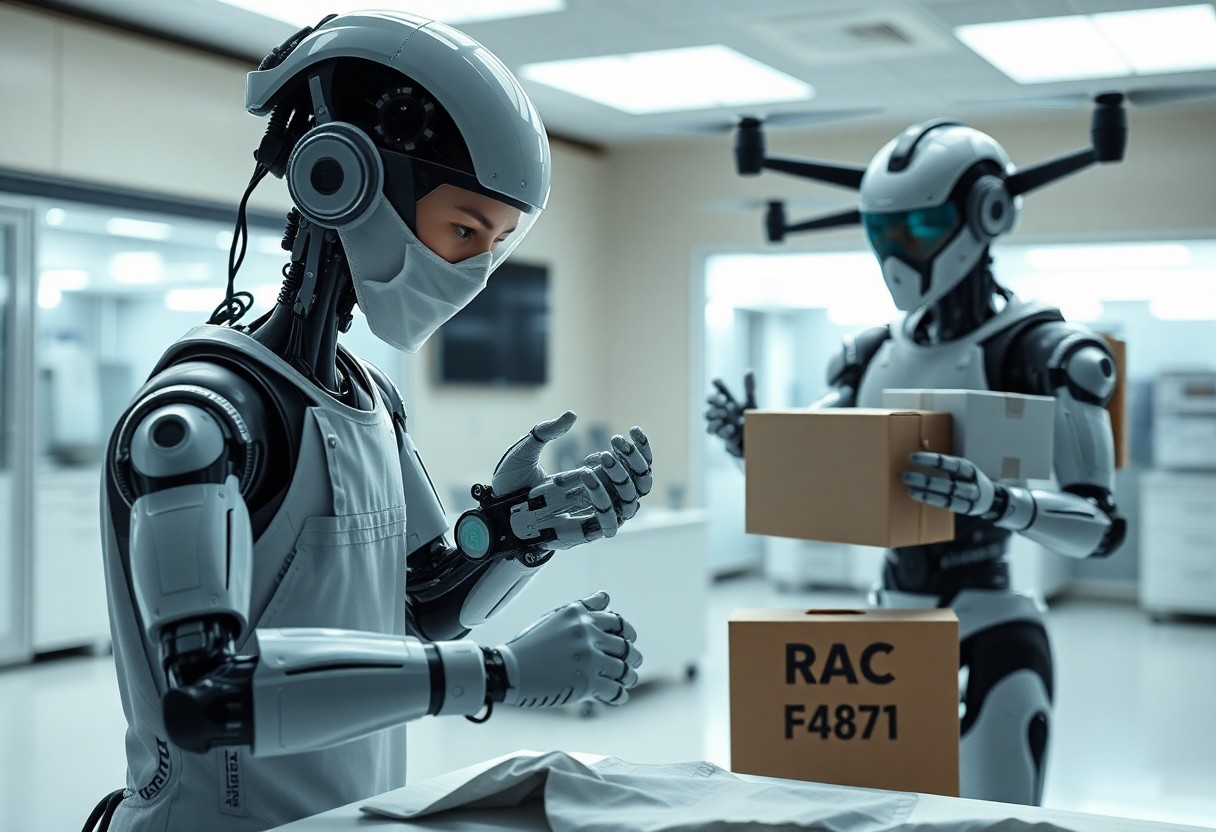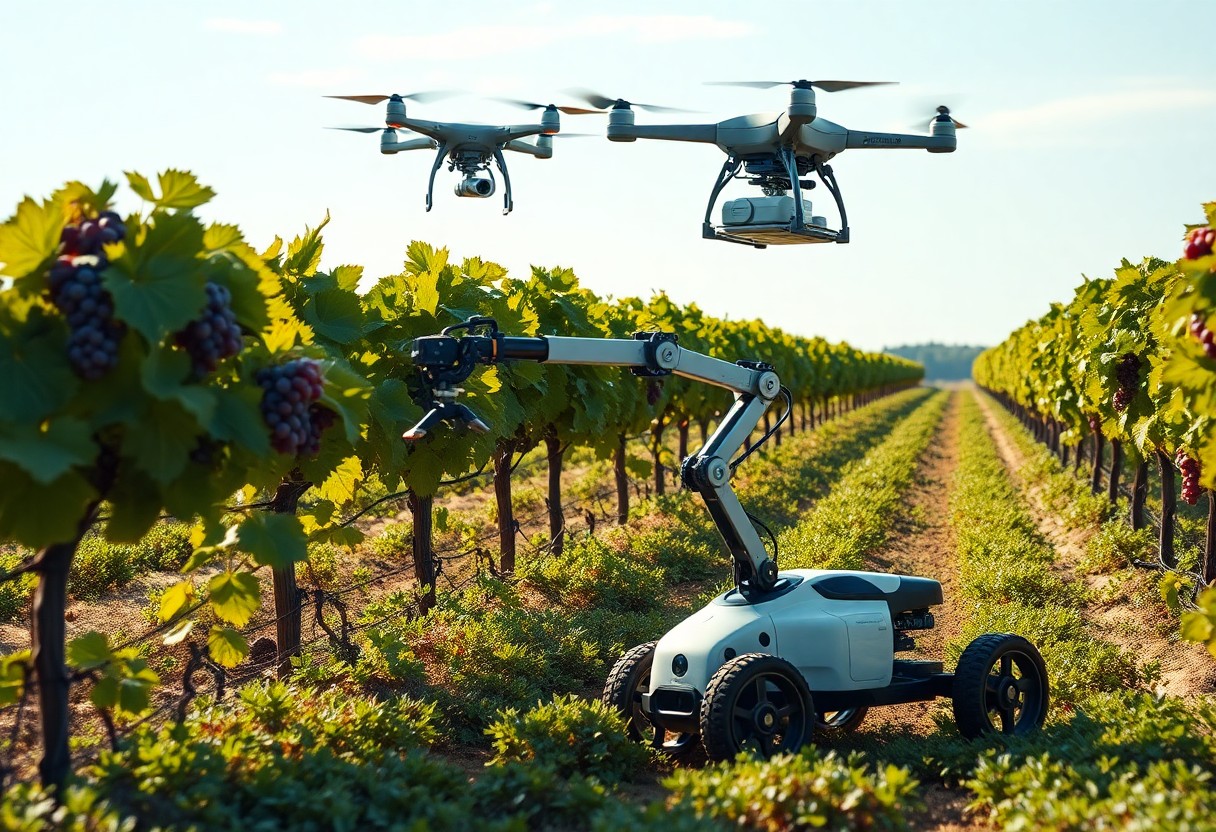You are entering an exciting world where technology and creativity intersect, transforming the entertainment landscape. From the thrilling attractions of theme parks to the captivating characters in blockbuster films, robots play an important role in enhancing your experiences. These advanced machines are designed to engage, entertain, and immerse you in breathtaking narratives, redefining how you connect with various forms of entertainment. Discover how robotics are reshaping the industry and what it means for your future enjoyment.
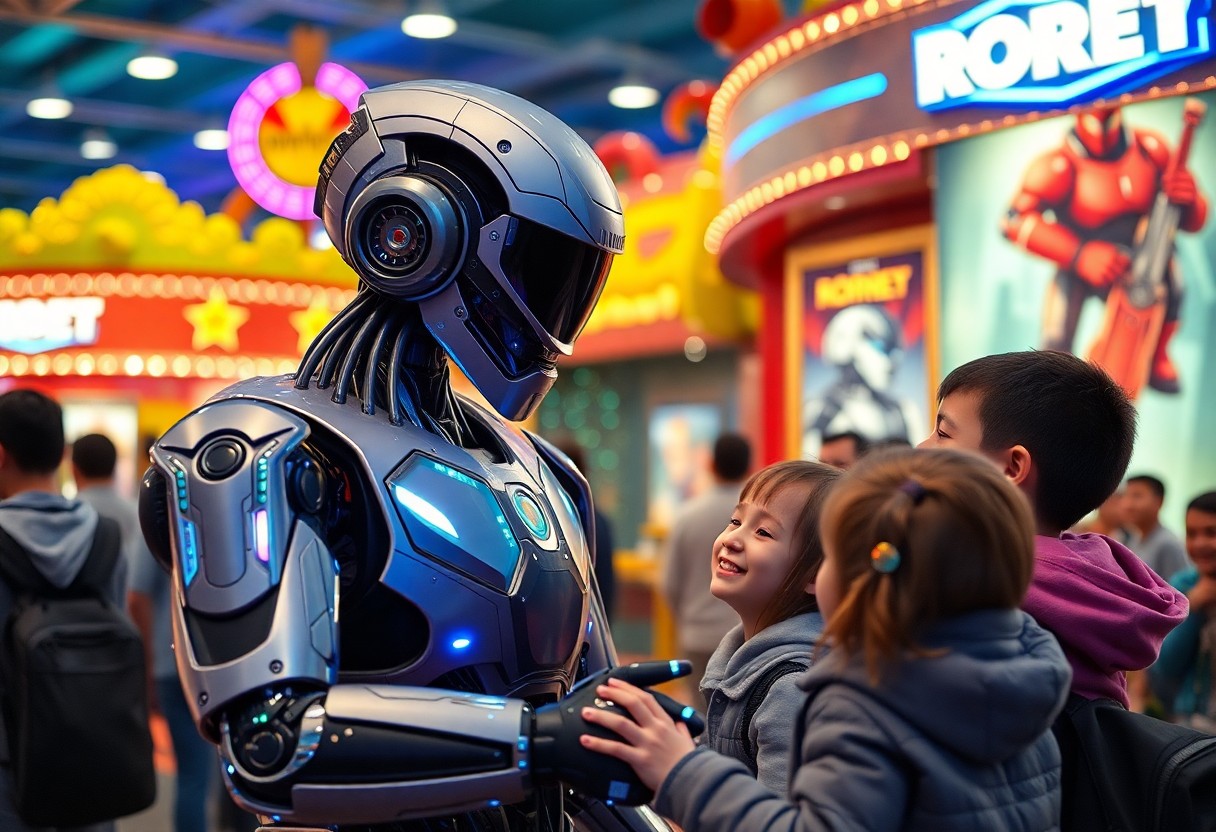
Enchanting Experiences: The Role of Robots in Theme Parks
Modern theme parks leverage robotic technology to create unforgettable experiences that captivate audiences of all ages. From animatronic figures that tell story-driven tales to interactive robots that respond to guest prompts, the integration of robotics provides a sense of wonder and engagement that enhances your visit. Parks like Disney and Universal Studios continue to innovate, using robotics to create unique attractions that evolve and adapt, immersing you deeper into their fantastical worlds.
Immersive Interactions: Enhancing Guest Engagement
Robots are transforming guest interactions, allowing you to engage with attractions in thrilling ways. Imagine a character from your favorite movie greeting you personally or a robotic guide providing information tailored to your interests. These interactions create a personalized experience that resonates on a deeper level, making your visit memorable and unique. The use of robotics also encourages playful engagement, making each encounter feel special and exciting.
Behind the Scenes: Operational Efficiency and Safety
Robotic systems play a key role in streamlining theme park operations and enhancing safety measures. By automating routine tasks such as cleaning and maintenance, parks can ensure that rides and attractions run smoothly while minimizing human error. Robotics also monitor crowd flow and safety protocols, ensuring a secure environment for all guests. This behind-the-scenes technology supports not just operational efficiency but also directly enhances your overall experience.
Maintenance robots, such as those used in parks like Disneyland, perform various tasks from cleaning ride surfaces to checking structural integrity, which helps reduce downtime and improve ride availability. These innovations lead to better resource allocation, enabling staff to focus on guest interactions rather than routine maintenance. Additionally, security robots patrol park areas, allowing for rapid response times to incidents, ultimately ensuring you feel safe and secure during your visit. By integrating these robotic solutions, theme parks maintain high operational standards while enhancing guest experience, making your time there seamless and enjoyable.
Cinematic Marvels: The Use of Robots in Filmmaking
Robots have transformed the filmmaking landscape, seamlessly blending technology with creativity. Filmmakers now utilize robotic systems for various tasks, from capturing dynamic shots to enhancing visual storytelling. This evolution not only increases efficiency but also allows for previously unimaginable cinematic possibilities. As a result, iconic films increasingly integrate robotic elements, making the experience more immersive and engaging for viewers.
Revolutionary Techniques: How Robots Are Reshaping Special Effects
Incorporating robots into special effects has revolutionized how movies are produced, allowing for precise, repeatable movements that enhance the visual narrative. Robotic arms and automated rigs now execute complex camera moves with flawless accuracy, enabling breathtaking visual sequences that might have once been impossible or cost-prohibitive. This advancement affords filmmakers the freedom to push the boundaries of creativity, crafting more extraordinary visual experiences.
The Rise of Autonomous Filmmakers: Exploring AI in Scriptwriting and Direction
Artificial intelligence is becoming a key player in the creative process of filmmaking, particularly in scriptwriting and direction. Advanced AI models are capable of analyzing vast amounts of data, suggesting plot points, and even generating dialogue, enhancing the writing process. Additionally, AI-driven algorithms can analyze audience preferences, offering insights that guide directors in crafting compelling narratives.
AI’s influence in scriptwriting and direction is becoming increasingly evident, with projects like “Sunspring,” a short film entirely scripted by an AI algorithm, showcasing the potential interactivity between technology and creativity. Filmmakers can now harness AI tools for brainstorming, enabling novel ideas and avenues for storytelling. AI also aids directors by analyzing viewer data to predict audience reactions, thereby refining film concepts affirmatively. As this technology continues to evolve, it will undoubtedly shape the future of cinema in exciting and unexpected ways, challenging traditional roles and expectations in the filmmaking process.
Emotional Resonance: Robots as Characters in Storytelling
The rise of robots in storytelling has sparked a profound emotional connection with audiences. These mechanical characters often embody human traits such as vulnerability, courage, and friendship, allowing you to empathize with their journeys. Films and series like “Wall-E” and “Big Hero 6” showcase robots navigating complex emotional landscapes, illustrating that while they may be programmed, the emotions they evoke are inherently human. By presenting robots as relatable characters, creators invite you to explore themes of love, sacrifice, and identity through a unique lens that resonates deeply.
Building Relatable Robots: The Impact on Audience Connection
Create connections by endowing robots with characteristics that mirror your own experiences and emotions. When these characters face challenges, defeat fears, or find companionship, you relate to their struggles and triumphs. This approach not only enhances story engagement but also deepens your investment in the narrative. For instance, the quirky, introspective nature of characters like BB-8 in “Star Wars” reflects relatable qualities, allowing you to embrace their journeys as if they were your own.
Narratives of Others: Robots in Animation and Live-Action
Both animation and live-action genres utilize robots to explore complex narratives that transcend traditional storytelling. Animated films like “The Iron Giant” portray robots as symbols of innocence and sacrifice, while live-action series such as “Westworld” research into existential themes through artificial intelligence. Each medium brings a distinct perspective, allowing you to experience storytelling that resonates on both emotional and philosophical levels, ultimately challenging your perceptions of technology and humanity.
In animated films, robots often serve as vehicles for exploring profound moral questions, inviting you to consider themes of free will and consciousness. For instance, “The Iron Giant” presents a robot grappling with its identity and purpose, imploring you to ponder the nature of heroism. On the other hand, live-action productions like “Westworld” blur the lines between reality and simulation, compelling you to confront ethical dilemmas surrounding artificial intelligence. Such diverse narratives across both mediums contribute significantly to the rich tapestry of storytelling, enhancing your understanding of the human experience through the lens of robotics.
The Future of Entertainment: Trends and Innovations
As technology evolves, the integration of robots in entertainment continues to redefine the audience experience. From interactive storytelling in theme parks to AI-driven characters in films, you can expect a future where robots not only enhance but also personalize entertainment, catering to individual preferences. Innovations such as virtual reality and augmented reality are likely to merge with robotic technologies, creating immersive environments where you can engage in entirely new ways with your favorite stories and characters.
Technological Advancements: What’s Next for Robots in Entertainment
Future advancements in robotics will focus on increasing interactivity and realism. Expect robots that can adapt their performances based on audience reactions, leveraging machine learning to create personalized experiences. State-of-the-art AI algorithms will enable robots to engage in dynamic conversations, making them appear more lifelike and relatable. Enhanced sensory technology will further blur the lines between robotic characters and human performers, enriching the overall entertainment landscape.
Shifting Consumer Expectations: How Audiences Are Embracing Robotic Interactions
Audiences increasingly favor immersive experiences featuring robotic interactions, which provide unique engagement opportunities. Data shows that 65% of consumers appreciate high-tech interactions during events, believing these enhance overall enjoyment. You are more likely to seek out venues that incorporate robotics, such as theme parks with animatronics or cinematic experiences that utilize robots for storytelling, as they offer something distinct from traditional forms of entertainment.
Your interest in robotic interactions is reshaping entertainment consumption. Data indicates that 70% of theater-goers are intrigued by the use of robots in performances, eager for an experience that combines technology with creativity. Fans of franchises like “Star Wars” and “The Mandalorian” have shown increased enthusiasm for live events featuring robotic characters. As experiences become more innovative and accessible, you find yourself more inclined to embrace encounters that blend the digital and physical worlds, indicating a fundamental shift in your entertainment expectations.
Ethical Considerations: The Fine Line Between Entertainment and Replacement
Robots in entertainment bring excitement and innovation, but they also raise important ethical questions. The integration of artificial intelligence and automation in various entertainment sectors can lead to moral dilemmas about replacing human performers and jobs. You may ponder the ramifications of having machines fulfill roles traditionally held by people, ultimately shaping the way audiences engage with entertainment and its creators.
Job Displacement Dilemmas: Analyzing the Impact on Human Workers
As robots take on more roles within entertainment, job displacement issues emerge. You might find yourself concerned about performers, animators, and other creative professionals facing unemployment as robots and AI systems become more capable. The entertainment industry, once a bastion of human creativity, could shift dramatically, necessitating a reevaluation of workforce structures and support systems for those affected.
Creative Ownership: Who Holds the Rights to Robotic Creations?
The question of creative ownership in robotic creations is increasingly relevant in today’s entertainment landscape. You should consider who has rights over works generated by AI and robots: the developers, the users, or the machines themselves? Legal frameworks struggle to keep pace with technological advancements, leading to vague interpretations of intellectual property rights in this new domain.
The complexity of creative ownership becomes evident when examining recent cases in the entertainment industry. For instance, AI-created music or artwork lacks clear attribution, often leaving creators in limbo regarding their rights. Debates around the use of AI-generated scripts in film raise significant questions about whether the original authors or the AI developers should reap the benefits of the creative process. As the landscape evolves, you may witness a growing demand for legal clarity to ensure fair practices and recognition for all parties involved.
Final Words
Presently, robots are transforming the entertainment landscape, enhancing your experiences at theme parks and in movies. By integrating advanced technology, these robotic innovations create immersive environments that captivate your imagination and elevate storytelling. As you engage with these advanced machines, you’ll witness firsthand how they redefine entertainment, offering new levels of interaction and excitement. Embracing robotics in this sector not only enriches your leisure time but also paves the way for future advancements, promising even more thrilling experiences to come.

